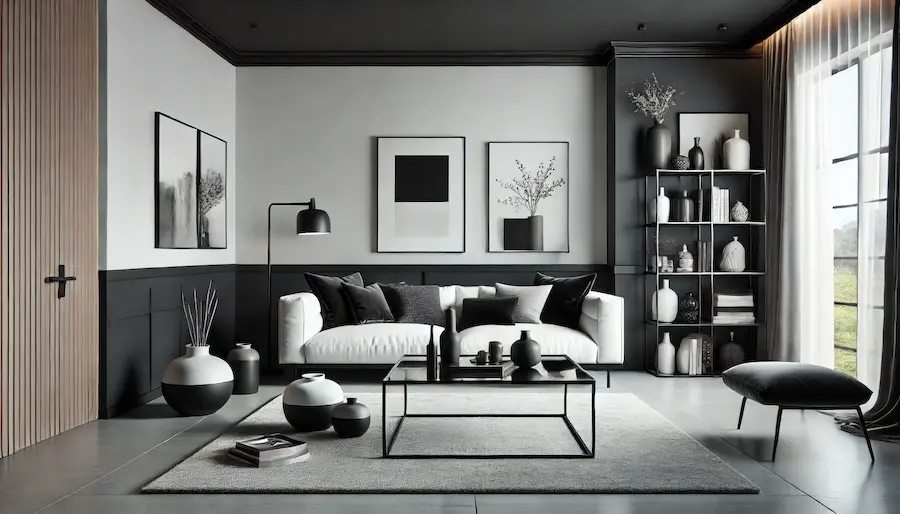A monochromatic living room employs varying shades and tones of a single color to create a cohesive and sophisticated space.
History and Origins of Monochromatic Design
Monochromatic design has roots in various art movements, including minimalism and modernism, which emphasize simplicity and the use of a limited color palette to achieve aesthetic harmony. In interior design, monochromatic schemes have been utilized to create elegant and unified spaces that focus on form, texture, and light.
Key Features of a Monochromatic Living Room
- Single Color Palette: The foundation of a monochromatic living room is the use of one color in various shades, tints, and tones. This approach creates a harmonious and visually appealing environment.
- Texture Variation: Incorporating different textures—such as smooth fabrics, rough surfaces, and glossy finishes—adds depth and interest to the space, preventing it from appearing flat or monotonous.
- Layered Tones: Utilizing a range of light to dark shades within the chosen color enhances dimension and visual intrigue. For example, pairing a deep navy sofa with sky-blue cushions can create a dynamic yet cohesive look.
- Accent Pieces: Introducing decor elements like artwork, rugs, or furniture that align with the monochromatic scheme reinforces the unified design. These pieces can serve as focal points while maintaining color harmony.
Applications of Monochromatic Design in Living Rooms
- Neutral Schemes: Employing neutral colors such as whites, grays, or beiges can create a serene and timeless living room. These palettes are versatile and can adapt to various design styles.
- Bold Monochrome: Opting for a vibrant color, like deep green or rich blue, in a monochromatic scheme can make a dramatic statement while maintaining elegance. This approach adds personality and energy to the space.
- Monochromatic Accents: If committing to an entirely monochromatic room feels overwhelming, incorporating monochromatic elements—such as a feature wall or coordinated accessories—can achieve a similar effect on a smaller scale.
Considerations When Designing a Monochromatic Living Room
- Balance: Ensure a balance between different shades and textures to prevent the space from feeling too uniform or dull. Incorporating a variety of materials and finishes can enhance visual interest.
- Lighting: Proper lighting is crucial in a monochromatic room, as it can highlight different tones and textures, adding depth and warmth. Consider using a mix of ambient, task, and accent lighting to achieve this effect.
- Personal Touches: Incorporate personal items and decor that reflect your style to make the space feel inviting and unique, even within a strict color scheme. This personalization prevents the room from feeling impersonal or overly staged.
Conclusion
A monochromatic living room offers a refined and cohesive aesthetic that can adapt to various design preferences. By thoughtfully selecting shades, textures, and accents within a single color family, you can create a space that is both elegant and inviting.
